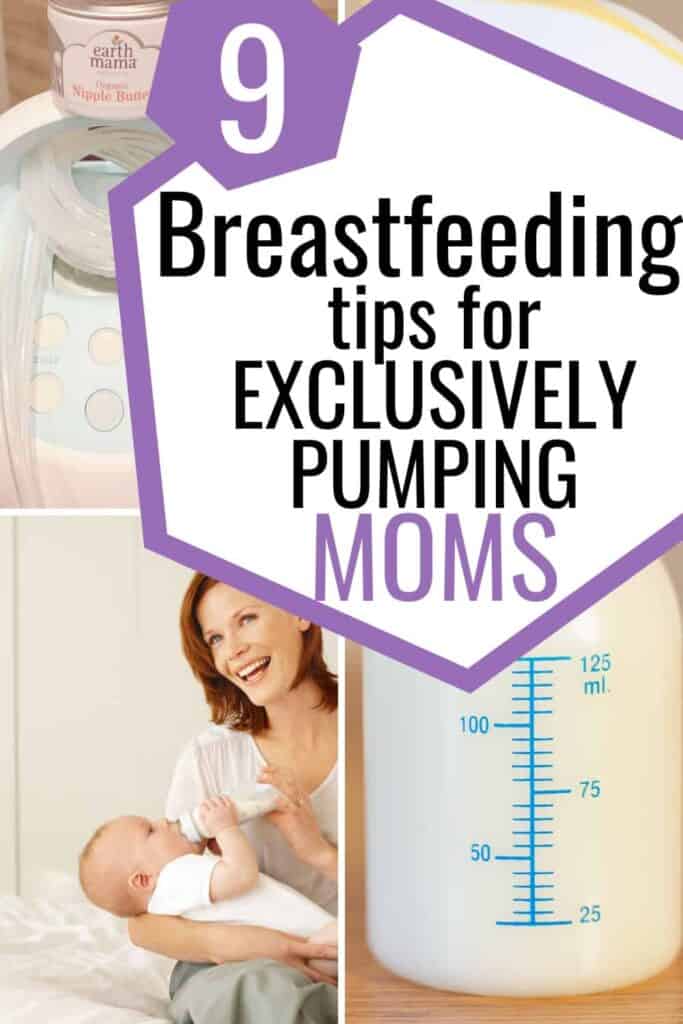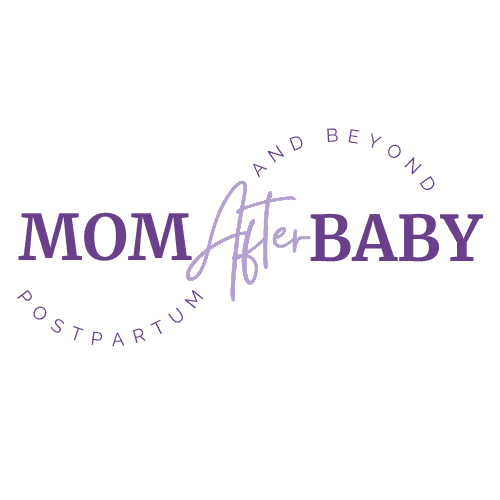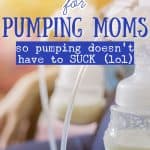Essential Tips for Exclusively Pumping Moms
This post may contain affiliate links that I may receive a commission from if you click & buy. In addition, the information on this site is NOT intended to be medical advice. See my full policy for more information.
News flash, exclusive pumping IS STILL BREASTFEEDING! There, I said it! If you’re looking to start exclusively pumping your breastmilk for your baby, you’ll want to use these tips for exclusively pumping moms to start your journey off the right way!
What is exclusive pumping?
Exclusive Breast Pumping is a process in which breast milk is removed from your breasts via a pump. Then, the milk is then bottled and fed to your sweet little baby!
Often times, moms choose or end up exclusively pumping for many reasons, such as:
- Your baby is in the NICU and unable to nurse.
- You aren’t comfortable nursing your baby.
- Your baby has difficulty latching.
- Latching your baby causes tremendous pain.
- You have to return to work
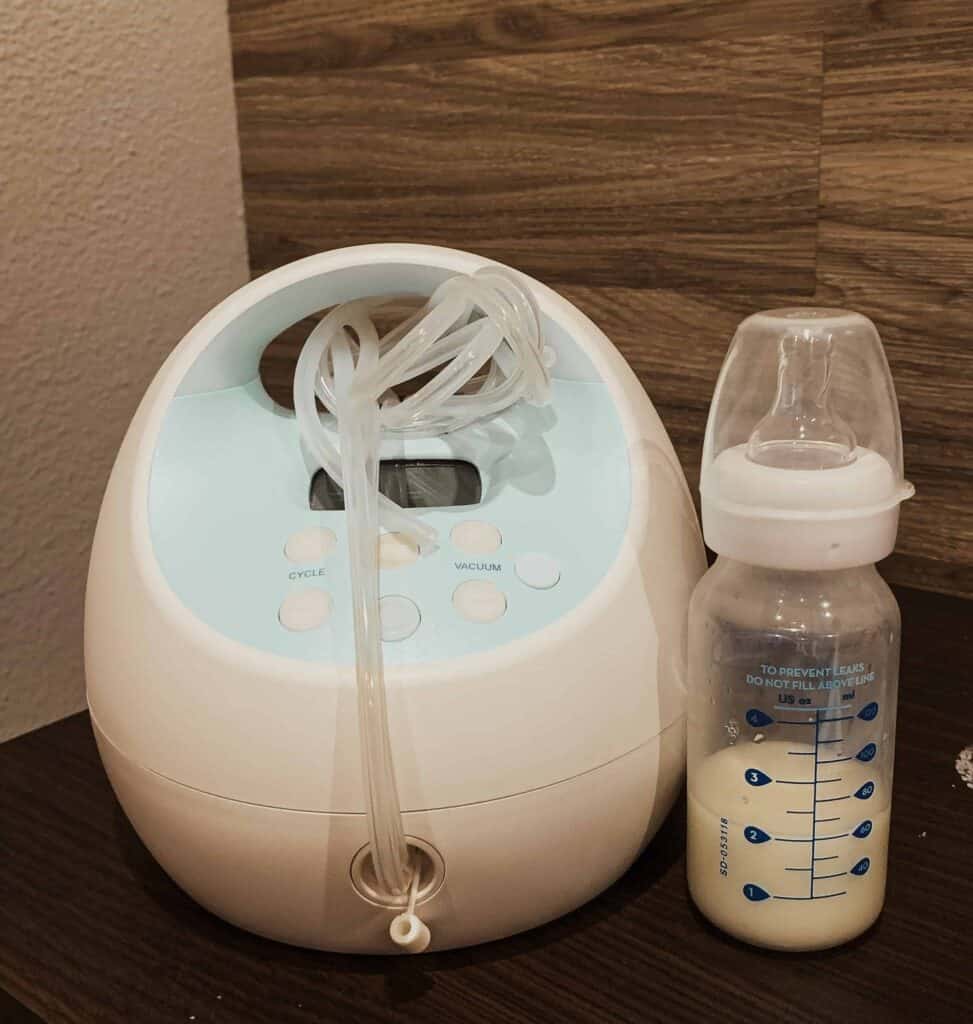
What is the BEST breast pump for exclusive pumping moms?
As an exclusive pumping mom, one thing you NEED to be sure of is that you have a reliable breast pump.
So what are the things you should be looking for in a breast pump?
- What are the options your insurance is willing to provide?
- If you don’t have insurance, can you afford to buy one or rent one?
- Do you want a MANUAL or ELECTRIC pump? Manual pumps typically require much more patience and time when pumping whereas Electric pumps are easier to use and much more convenient.
- Single or double breast pump? A single breast pump can be beneficial for moms who are nursing and pumping, allowing them to nurse the baby on one side while they pump the other. A double breast pump allows you to pump milk from both sides simultaneously making it much more convenient and allows you to typically express more milk.
- Choose a pump that has multiple flange sizes (ensuring you find a flange that fits your breasts is extremely important not just for comfort, but for efficient pumping of your milk)
- Opt for a CLOSED-SYSTEM Breast Pump. This means the tubing that connects your pumps to your bottles has a barrier that prevents liquid from flowing back into the machine, whereas older pumps with an OPEN-SYSTEM, don’t have that barrier protection leaving room for possible milk contamination (although the risk is typically considered very small).
- Consider the strength & suction options of the breast pump. When looking for a breast pump, you’ll see the suction strength listed as mmHg. One of the lowest suction electric breast pumps I’ve seen was around 220 mmHg at its top suction level for that pump while others are around 350 mmHg as their top suction level. You don’t always need the strongest suction, but it definitely helps! You also want to pay attention to the suction patterns the pump offers. Typically, you want to have a ‘let-down’ option and an ‘expression’ option (both designed to mimic a baby’s suction pattern).
Now that you have some more information on what you should look for when choosing your ideal breast pump, let’s take a look at what I consider some of the BEST breast pumps out there!
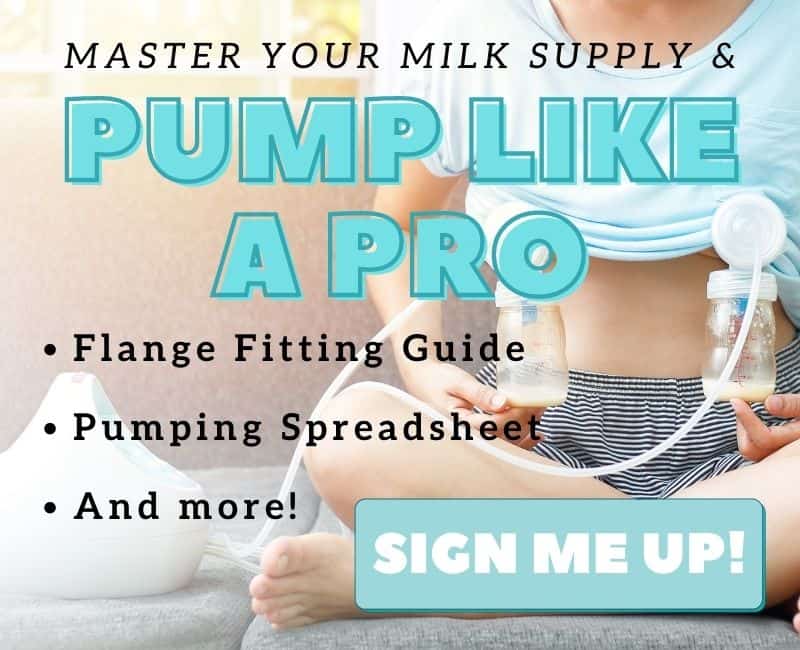
Spectra Breast Pump (S1 pump)
This is actually the breast pump I used for a total of 16 months! I absolutely recommend the Spectra Breast Pump and I’m going to break down exactly why!
I’m also going to be focusing specifically on the Spectra S1 Model since that is the one I personally used and have experience with.

Variety: The Spectra brand offers a variety of selection of their breast pumps. They offer the Spectra S1 Electric Rechargeable Breast Pump (the one I have), Spectra S2 Electric Breast Pump (must be plugged in to use), or the Spectra 9Plus Portable Electric Breast Pump.
Pump Capacity: Allows the option to pump single or double (meaning you can cap off one side to pump one breast at a time or pump them both at the same time!).
Suction Strength: This pump is considered hospital-strength and has suction power up to 270 mmHg.
Portability: The S1 model allows recharging so that you aren’t connected to a power cord the entire time! I would often carry my S1 around while pumping so I could knock out chores around the house while my son was napping. A very convenient feature for breastfeeding moms!
Open or Closed System? The Spectra S1 is a CLOSED system!
Accessories: The Spectra S1 Pump comes with a set of 24mm & 28mm flanges (you can use their handy measuring tool to see what your flange size is), built-in night light (perfect for late-night pumping sessions), quiet motor, backflow protectors, storage bottles, duckbill valves, and tubing! You get EVERYTHING you need to begin a successful exclusively pumping journey!
Extras: Spectra provides TREMENDOUS customer service and support from certified Lactation Consultants! They have an online blog that answers a variety of questions regarding pumping/breastfeeding, they hold LIVE videos with their lactation consultants to provide tips and support, and they also have an online section of FAQS/Videos to provide support moms as they embark on using their spectra pumps!
Medela Breast Pumps
Medela has been one of the leading companies within the breastfeeding industry for over 50 years! It’s no wonder they provide some of the most variety and highly recommended breast pumps + accessories to breastfeeding!
For the sake of this post, I’m going to focus on one of their most popular models, the Pump in Style Advanced.

Pump Capacity: Double pumping breast pump.
Suction Strength: The max suction of this pump is 250 mmHg.
Portability: This pump is known and made for its portability features. In fact, it sells in 2 different options: with a travel tote or with a backpack.
Open or Closed System? The Medela Pump in Style is a CLOSED system!
Accessories: The Medela Pump in Style comes with a portable battery pack, 2 sizes of breast flanges, all tubing/bottles, a travel tote or backpack, a portable cooler bag with an ice pack to transport your breastmilk!
Extras: Medela is also known for providing great customer service and support from experts via their support group known as “The Moms Room”.
Willow Pump (hands-free breast pump)
The Willow pump is a unique hands-free breast pump, allowing mom to pump without any external wires, tubes or bottles attached to you!
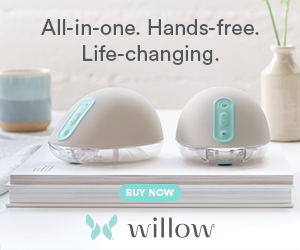
The pump conveniently tucks into your bra and is programmed to sense when you’re having a let-down, this way it can automatically adjust itself to the expression mode. As it pumps, your milk goes into a specially designed milk bag or their new reusable storage containers!
Basically, this pump takes the common fusses about traditional pumps and has created a more convenient and efficient way to pump breast milk for your baby!
Pump Capacity: It can be used as a single or double breast pump.
Suction Strength: Per Willow’s support team (who was VERY fast to reply to my questions about their pump, so excellent on the communication), “Willow has 7 different suction levels ranging from 60mmHg to 245mmHg”.
Accessories: You will need to purchase their custom spill-proof milk bags or the reusable breast milk containers (these containers are not, however, spill or leak-proof like their counterpart bags).
Extras: Because Willow pump is one of the first of it’s kind, they do an excellent job of providing a video library to help you get started with using your pump! Not to mention their very fast responding support team will get back to your questions or inquires via phone, email or text quickly if they arise!
Helpful tips for exclusively pumping moms:
What is an ideal exclusive pumping schedule?
It’s important to understand how your baby feeds or would need to nurse in order to create a schedule that you can adjust as they get older.
Generally, newborns nurse about 8-12 times/day. This would equate to pumping every 2 hours in a 24 hour period. As your baby gets older and nurses less, you can adjust the frequency to match their needs.
Another thing to be mindful of is that your breast milk supply is crucial to establish within the first 12 weeks. That means if your goal is to breastfeed for the long term, you should stick to every 2-hour pumping schedule to make sure you’re establishing your breast milk supply as it comes in and regulates.
How often should I pump if exclusively pumping?
As mentioned above, if you’re in the newborn stage, you should ideally pump every 2 hours at least until your breast milk supply is established and regulated (during those first 12 weeks).
As your baby gets older and your baby begins to naturally need to nurse less, you can drop down your pumping sessions to match their needs!
For example, if your baby is 4 months old and eating less often, you can drop your pumps from every 2 hours to every 4 hours. Keep in mind, this will be highly independent of each mom and her breast milk supply.
Personally, I nursed and pumped together because I had a very low supply. The only way for me to keep up my supply was to pump after our nursing sessions AND in the middle of the night (when your production hormones are at their peak levels), so although my son was older and needed to eat less often, I wasn’t able to drop my pumping sessions without my supply dramatically decreasing.
How long should you pump for each session
A good rule of thumb is that you should pump for no less than 15 minutes and no more than 30 minutes at a time.
If you find yourself having to pump longer than 30 minutes, you should seek advice from a lactation consultant to help you determine why.
How much milk should I be pumping during each session?
It is SO important to be mindful that every mama’s breast milk output will vary.
The average amount for moms is around 2oz TOTAL per pump session. Again, this is just a general average amount.
If you’re pumping 1/2 oz or less TOTAL per pump, you might want to consider a couple of things:
- Are you using a good quality pump?
- Are you using the correct size flanges/shields?
- Did you make sure to maintain and replace your pump parts regularly?
- Have you tried warm compressing before or during your pump?
- Have you tried active breast massaging during pumping?
- Has your diet changed?
- Have you sought help from a Lactation Consultant?
- Have you tried power pumping to increase your supply?
- Did you recently reduce the number of pumps per day?
- Have you tried using any galactagogues? I used Legandairy Milk and I absolutely swear their products made a difference in my breastfeeding journey! If you’d like to try their products and save 10% off, use this link to go to Legendairy Milk!
What is power pumping?
Power pumping is a form of pumping breast milk to mimic cluster feeding. Cluster feeding is a phase that babies go through where they nurse for short, but frequent intervals back to back.
How does power pumping work?
Power pumping works by expressing the breast milk out of your breasts which in turn stimulates your body to produce more milk. This is where understanding that your breast milk supply is heavily based on a supply and demand basis comes in handy.
The more you empty, the more milk your body will want to make. The less or inefficiently you empty, the less your body will make milk.
Typically, most moms can see a gradual breast milk supply increase in as little as 3 days all the way up to 2 weeks. So be sure to stay the process and give it some time.
The idea is to pump for a short interval, but frequent feeds. When my supply tanked, I not only increased my pumping, but I did 1 week of power pumping which really did help.
My daily power pumping routine looked a bit like this:
Power Pump 1 – 7am
- 10 mins pumping (with a warm compress on breasts)
- 10 mins pause
- 10 mins pumping (active massaging)
- 10 mins pause
- 10 mins pumping (active massaging)
Power Pump 2 – 8pm
- Power Pump 2 – 8pm
- 10 mins pumping (with a warm compress on breasts)
- 10 mins pause
- 10 mins pumping (active massaging)
- 10 mins pause
- 10 mins pumping (active massaging)
All exclusively pumping moms need a good pumping bra!
Setting yourself up for success by using good quality pumps, supplies and pumping attire are key components to having a long-lasting and enjoyable journey!
Personally, I was able to get by with my ‘cheaper’ pumping bra along with my all-time favorite nursing/pumping bra by Kindred Bravely.
I liked using both interchangeably because there was a time and a place for them both.
I didn’t always want to use my cheaper bra, especially if I had a lot of errands to run because it wasn’t very supportive or even comfortable for long time wear.
However, my other bra was perfect if I had to step out for errands and still allow me to pump/nurse my son throughout the day. It is a very supportive bra in my opinion so I would always swap into a normal nursing sleep bra at night and then use my cheaper bra for night pumps.
Final thoughts on tips for exclusively pumping moms:
Overall, whether you choose to nurse or pump for your baby — IT’S HARD WORK!
There is no easy way out here as they both have their challenges, but they’re also BOTH BREASTFEEDING!
If you want to set yourself up for an enjoyable and successful experience as a pumping mom make sure you:
- Use a good quality breast pump & take care of your pump/parts.
- Understand how breast milk and your supply is established.
- Seek help from a lactation consultant if needed.
- DON’T compare what you produce/pump to other moms – we’re all different!
What other tips for exclusively pumping moms did you find helpful?
